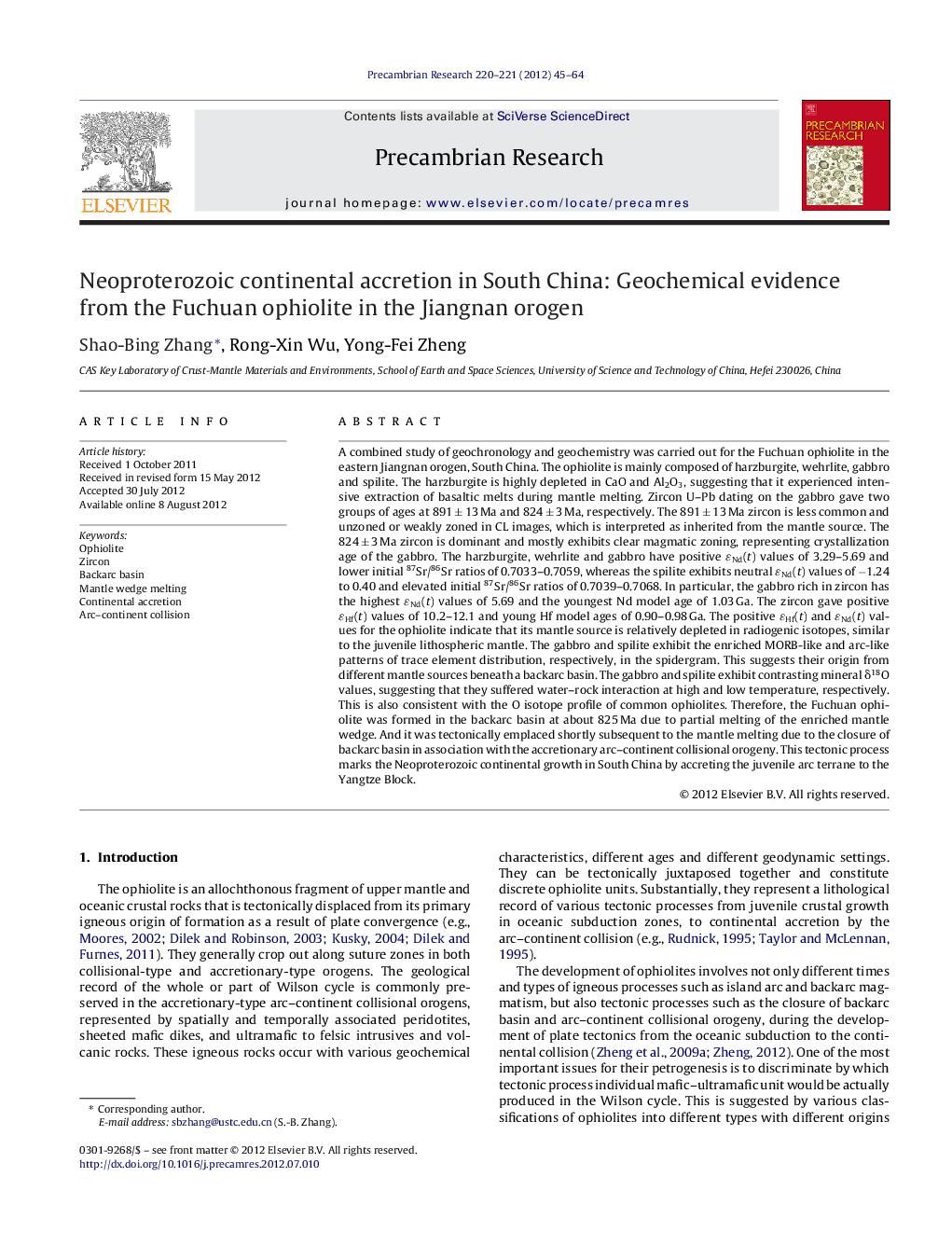| Article ID | Journal | Published Year | Pages | File Type |
|---|---|---|---|---|
| 4723472 | Precambrian Research | 2012 | 20 Pages |
A combined study of geochronology and geochemistry was carried out for the Fuchuan ophiolite in the eastern Jiangnan orogen, South China. The ophiolite is mainly composed of harzburgite, wehrlite, gabbro and spilite. The harzburgite is highly depleted in CaO and Al2O3, suggesting that it experienced intensive extraction of basaltic melts during mantle melting. Zircon U–Pb dating on the gabbro gave two groups of ages at 891 ± 13 Ma and 824 ± 3 Ma, respectively. The 891 ± 13 Ma zircon is less common and unzoned or weakly zoned in CL images, which is interpreted as inherited from the mantle source. The 824 ± 3 Ma zircon is dominant and mostly exhibits clear magmatic zoning, representing crystallization age of the gabbro. The harzburgite, wehrlite and gabbro have positive ɛNd(t) values of 3.29–5.69 and lower initial 87Sr/86Sr ratios of 0.7033–0.7059, whereas the spilite exhibits neutral ɛNd(t) values of −1.24 to 0.40 and elevated initial 87Sr/86Sr ratios of 0.7039–0.7068. In particular, the gabbro rich in zircon has the highest ɛNd(t) values of 5.69 and the youngest Nd model age of 1.03 Ga. The zircon gave positive ɛHf(t) values of 10.2–12.1 and young Hf model ages of 0.90–0.98 Ga. The positive ɛHf(t) and ɛNd(t) values for the ophiolite indicate that its mantle source is relatively depleted in radiogenic isotopes, similar to the juvenile lithospheric mantle. The gabbro and spilite exhibit the enriched MORB-like and arc-like patterns of trace element distribution, respectively, in the spidergram. This suggests their origin from different mantle sources beneath a backarc basin. The gabbro and spilite exhibit contrasting mineral δ18O values, suggesting that they suffered water–rock interaction at high and low temperature, respectively. This is also consistent with the O isotope profile of common ophiolites. Therefore, the Fuchuan ophiolite was formed in the backarc basin at about 825 Ma due to partial melting of the enriched mantle wedge. And it was tectonically emplaced shortly subsequent to the mantle melting due to the closure of backarc basin in association with the accretionary arc–continent collisional orogeny. This tectonic process marks the Neoproterozoic continental growth in South China by accreting the juvenile arc terrane to the Yangtze Block.
Graphical abstractFigure optionsDownload full-size imageDownload as PowerPoint slideHighlights► The Fuchuan ophiolite was formed at 824 ± 3 Ma due to partial melting of the enriched mantle wedge above a backarc basin. ► The backarc basin is indicated by contrasting compositions in trace elements and oxygen isotopes between gabbro and spilite. ► The backarc basin was short-lived and the ophiolite was tectonically emplaced during arc–continent collision. ► The Neoproterozoic continental growth in South China is primarily marked by lateral accretion of the juvenile arc terrane to the Yangtze Block.
